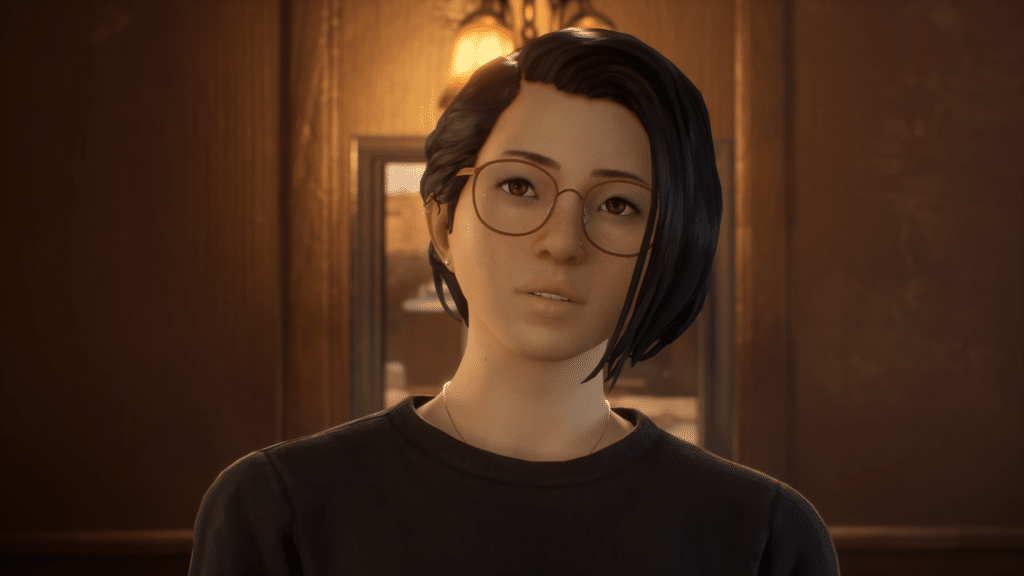New queer game Life is Strange: True Colours explores empathy, music and the importance of vibing

Life is Strange: True Colors. (Square Enix)
Every Life is Strange game features psychic powers, but in True Colors it’s not protagonist Alex Chen’s ability to read emotion that’s powerful: it’s the music.
Australian duo Angus & Julia Stone have created an entire album, fittingly titled “Life Is Strange”, to accompany the game that’s all melancholic plucked guitars and gentle, emotive vocals. That’s alongside a whole host of other indie artists offering up their music. The series is known for its emo feel and True Colors is even more authentic in this regard.
What’s more interesting are the gameplay implications. As with previous games, every now and then you’re presented with a moment of calm: a song kicks in as the camera pans out and the plot pauses for a breather. Here, though, they tie in beautifully with the storytelling and have a powerfully emotive draw, with songs written specifically as moments of reflection in the plot.
In this way, beyond the cinematic trappings of the series, True Colors feels more akin to an interactive music video. The game isn’t afraid to step back and let the music carry the weight of feeling. It lets you just… vibe.
Alongside soaking up the music, it’s an opportunity to appreciate the visuals too. True Colors is the most visually appealing Life is Strange game yet, with a look that’s more realistic yet still stylised and features beautifully colourful vistas in contrast to the often downbeat narrative.
Those moments of calm are needed in a plot that takes some dark turns. Alex, an orphan, arrives in the small mining town of Haven Springs to live with her long lost brother, Gabe. Alex grapples with her secret psychic abilities, but tragic events force her to face her identity and her past.
Thematically the game touches on death, guilt and trauma, alongside sexuality and even Alzheimers. True Colors explores a small town story with high personal stakes – the little guy vs the big corporation – but it’s interacting with the empathetic characters and their personal struggles that really draws the player in. Though Alex’s phone often interrupts at inopportune times, the use of SMS and social media adds welcome context to the plot.
It’s testament to the quality of the writing and performances that True Colors feels more mature than past entries in the series and raises the bar for interactive drama. There are still the odd awkward moments, but they’re far less cringey. Even a rendition of Radiohead’s “Creep” manages to feel emotive instead of cliché.
The supporting cast are excellent, but above all is the performance of Erika Mori as Alex. Alex is a likeable protagonist: quietly cool with moments of sass and dry humour. There are layers and subtleties to the performance: raw, touching and affecting. That’s aided by performer mxmtoon, who does a wonderful job as Alex’s singing voice.

Life is Strange: True Colors. (Square Enix)
Central to the game is Alex’s ability to empathise with the inhabitants of Haven Springs and manipulate their emotions. Be it sadness, anger, fear, or happiness, characters are surrounded by a coloured aura that expands to affect the world around them, often in highly imaginative ways. Between dreamworlds and nightmares, these sections are genuinely evocative and gamey without being trite.
It’s often through using these powers the game narrative splits, though as with the rest of the series it wrestles with offering choice and steering a linear narrative. But at its core, True Colors explores the power of emotions, feeling things good and bad. And while Alex can manipulate emotions, what are the ethics of this? Is it possible to manipulate responsibly? What might the consequences be? The various outcomes of the narrative are numerous and intriguing.
It’s also an inherently queer narrative, as the series is known for. Yes, Alex is bisexual and can choose to romance either Steph or Ryan – or neither, if you’d rather be friends. At one point Steph outright asks Alex “so, are you into girls?” to which Alex can reply “both, I’ll let you know when I find the right person”.
Yet beyond this, Alex’s power makes her different. What should be celebrated, she sees as a curse. She’s an outsider in this community, but she finds acceptance as she deals with her own identity, and love in a new found family.
As if a young woman with psychic powers wasn’t strange enough, the game’s climax requires a leap of faith as the rug is pulled from beneath. But it does resolve into a satisfying conclusion.
It highlights the gulf between generations. It explores the experience of an immigrant family in white America and how marginalised groups must stand up against archaic, white, male institutions. It emphasises the need for empathy and understanding to bring communities together.
In a world that’s so vastly divided by difference, True Colors is a pertinent and urgent story.
And it highlights the power of music. It’s through music that Alex learns to deal with her past trauma and her identity; and it’s through music that we journey with her.
4 / 5
Life is Strange: True Colors is available from 10 September on PC, Xbox and PlayStation consoles, and Stadia (Nintendo Switch coming soon).
For more gaming news, follow Gaymeo on Facebook and Twitter. You can also email us with any news or tips on [email protected]

